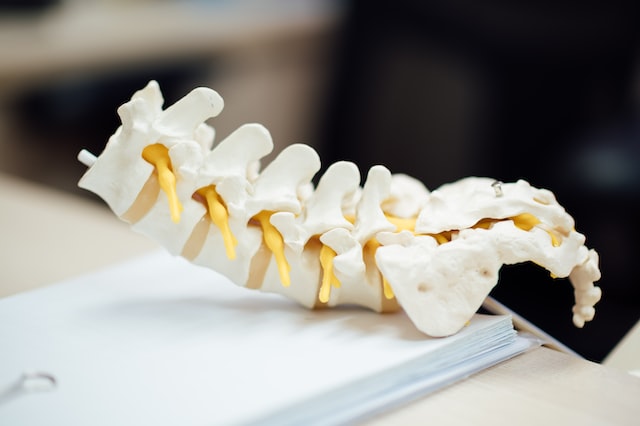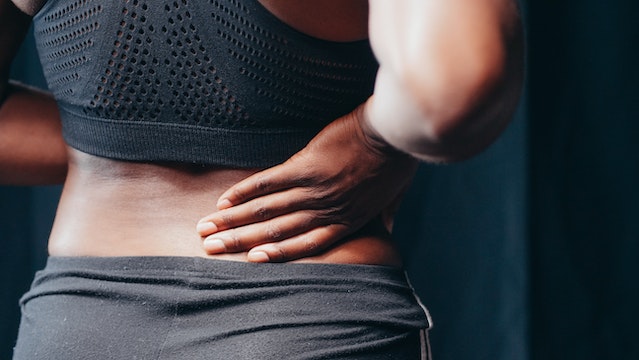The Two Most Important Things That Helped Me Recover From Lower Back Pain
In October of 2018 I herniated the L4-L5 disc in my lower back, causing sharp, excruciating pain to radiate across my back. It was the most painful injury I’ve ever experienced. More excruciating than dislocating my shoulder four times, worse than tearing my groin, and more nagging than multiple high ankle sprains on the same ankle. The recovery has been a long process full of ups and downs.
I’ve learned a lot along the way, but the two things that have helped the most are keeping my diet in check, and strengthening my core. As a personal trainer, I’ve found that many of my clients who experience lower back pain have been able to reduce or completely eliminate the pain by focusing on diet and core strengthening exercises.
Diet
I didn’t fully grasp the importance of eating well to reduce the effects of previous injuries until recently. Eating whole (or minimally processed) foods and reducing alcohol consumption and other inflammatory foods/drinks helped eliminate my lower back pain just as much, or more, as any exercise or movement I was doing to recover. Your spine is very sensitive to inflammation. I had ruptured the disc (a rubber-like shock absorbing ring filled with a gel like substance between every vertebrae), and because of this, that disc will be more susceptible to negative effects on the spine for the rest of my life. One of these negative effects is inflammation.
I spent the spring and summer of 2021 with the longest bout of constant lower back pain since the initial injury in 2018. Although the pain wasn’t as extreme as the initial injury, it lasted much longer. I was deadlifting over 500 lbs before the injury, and within a year and a half after the injury I was back to deadlifting 500 lbs, completely pain free. But then three years later, during this six-month stretch in 2021, I couldn’t deadlift more than 100 lbs without excruciating lower back pain. As someone who loves lifting heavy weight, this was very frustrating and depressing.
The thing that finally got me over this hump was changing the way I ate. Eating healthy all the time, for every single meal, is extremely difficult to do. I eat healthy food/meals about 80% of the time. This is good enough for me and most of the people I’ve worked with to achieve their health and fitness goals. It’s unrealistic and mentally challenging to eat perfectly healthy (whatever that means to you) 100% of the time. During this six-month bout of chronic lower back pain though, I was eating healthy about 50% of the time. It was summer and I was under a decent amount of stress because of changing living situations and changes happening with my business. Eating processed, unhealthy foods half the time though is enough to set off a chain reaction of inflammation in your body that will worsen any area that is already injured or susceptible from a previous injury.
So, towards the end of summer 2021, I decided that I needed to really crack down on my diet and get back to eating well 80% of the time. I made this decision without even realizing how much it was about to help my lower back pain. I spent about four days where I ate nothing but clean, whole foods, drank no alcohol, and made sure all of my other healthy lifestyle choices were in check. After that I continued with the 80% rule like I usually do. After about three days into this eating “reset” though, my back pain disappeared. Like it literally vanished. At the time, I attributed it to the corrective exercises that I had been doing. About a week later though it dawned on me: the lower back pain went away after just a few days of eating well.
I hadn’t connected the two before, but the more I dove into the research, the more it became clear: your spine is very sensitive to inflammation, and eating foods that reduce inflammation reduces your lower back pain!
Core Training
 This is probably the biggest lesson I learned from whole experience of herniating a lumbar disc. Before we dive into why core training is so important for managing lower back lower back pain, let’s quickly define what your core is. Depending on which trainer, coach, physical therapist, etc., you ask, you might get a slightly different definition, but I like to define your core as everything between your waist and your sternum (wrapping around to the back). This is your abs, obliques (sides) and lower to mid back.
This is probably the biggest lesson I learned from whole experience of herniating a lumbar disc. Before we dive into why core training is so important for managing lower back lower back pain, let’s quickly define what your core is. Depending on which trainer, coach, physical therapist, etc., you ask, you might get a slightly different definition, but I like to define your core as everything between your waist and your sternum (wrapping around to the back). This is your abs, obliques (sides) and lower to mid back.
I’ve always enjoyed lifting heavy weight. In order to lift heavy weight properly, your core needs to be really strong. Take the squat or deadlift for example. If you are squatting with a heavily loaded bar across the back of your shoulders, your legs need to be really strong to lower the weight and come back up, but what is between that bar and your legs? Your core. If you are deadlifting very heavy weight, your hips, grip, and back need to be really strong to lift that heavy bar off the ground, but what is between your hips and your big back muscles? Your core. My previous thinking was, ‘Ok, I want to get stronger at squatting. I need squat more, and do accessory lifts like lunges, step ups, hack squat, and other exercises that increase strength in your legs and hips. I also want to get stronger at deadlifting. To do this I will deadlift more, and focus on accessory exercises like hip thrusts and bent over rows—exercises that strengthen your hips, upper back, and grip.
For some reason though, I just never focused directly on training my core. Even as someone who had been an athlete my whole life and been lifting weights since I was 13 years old, I just never did. In hindsight, it’s probably because training your core sucks, and even people who enjoy exercising usually don’t like taking the time to train their core.
But after injuring my back so severely by herniating the disc, I was forced to learn more exercises from my own research and from working with physical therapists and other experts in the fitness field. Not surprisingly, most of these rehabilitation exercises were core exercises. Doing these core exercises played a critical role recovering from the herniated disc and getting back to normal life after the injury. Since then I have continued to incorporate those same core exercises, along with new ones, into my training. The difference in my overall strength and wellness since then has been astounding.
I know that that training your core works well for managing/eliminating lower back pain, because any time I stop doing them for a week or two, the lower pain returns. After getting back into the routine of doing the core exercises though, the pain is usually gone within a few days to a week.
about author
subscribe to newsletter
Like this article? Subscribe and receive future articles in your email.
